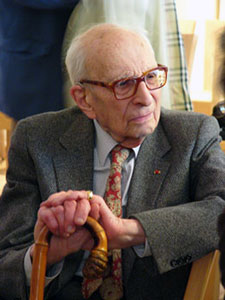|
| ||||||||||||||||||||||||||||
|
||||||||||||||||||||||||||||
|
|
||||||||||||||||||||||||||||
the key that unlocks the door
In the late Nineteenth and early Twentieth Centuries, anthropologists such as Bronislaw Malinoski and Frank Boas, psychologists such as Sigmund Freud and Carl Jung, mythologists such as Claude Levi-Strauss, Mircea Eliade, Heinrich Zimmer, and Joseph Campbell, and numerous other academics from such fields as anthropology, history, archeology, and archeoastronomy gave myth serious study. Their research raised all sorts of tantalizing, fascinating, and puzzling questions, some of which are posed here. They also found some stimulating and surprising answers. These researchers of the last century were led to their study of myth and mythology by their interest in contemporary sociology and the modern mind. Since myth has been a prominent aspect of virtually all cultures from time immemorial, some wondered whether it played an integral and essential part in human life. Would a close and serious-minded study of the myths of ancient cultures and unsophisticated contemporary societies shed important light on present-day mankind at large? Would a deep understanding of myth have a legitimate role to play in solving psychological and emotional problems, a function that myths of ancient cultures seemed to have performed in the past and that myths seem to perform today in unsophisticated societies? Others wondered whether myth embodied historical fact as well as abstract truth. (On the left, below, a picture of Claude Levi-Strauss, a Frenchman. On the right, a picture of Carl Jung, a Swiss. Both are shown here in their later years, after their once-revolutionary ideas had become more-or-less universally accepted.)
how they reasonedMost anthropologists agree that modern man (species homo sapiens sapiens) dates from perhaps 40,000 or 50,000 years ago, when he succeeded species homo sapiens, who goes back much farther. In this evolution, the brain capacity of mankind swelled in one step from a nominal average of about 1,000 cc for homo sapiens to a value of about 1,400 cc for homo sapiens sapiens. Brain size has remained virtually unchanged since this evolutionary milestone. From these facts and other anthropological and archeological evidence, there is good reason to to believe that modern man's intelligence and social makeup haven't changed fundamentally since he appeared. Today's man is essentially 100,000-year-old man with improved clothing, social institutions, and technology. There is ample recorded evidence that modern man makes myth and has been doing so throughout recorded history and prehistory. Since the mental makeup of modern man is virtually unchanged from that of his ancestors, it would appear likely that modern mankind has been making myths at least since its emergence 50,000 years ago. Armed with this insight, scientists and mythologists who worked on questions of myth explored a number of vital questions. Was something integral and permanent in the structure and workings of the mind of homo sapiens sapiens responsible for the outpouring of myth throughout the ages? Were myths to be properly interpreted as statements of literal truth, metaphors about man's innate nature, or wild and unsubstantiated imaginings? Had historical and factual information been conveyed in myths because of events that this ancient species has actually undergone? If factual or metaphorical information was embedded in myths, could keys be found that would help unlock the secrets they contained? what they concludedExperts came to realize that the answer to all these questions was yes. Although mythic styles and stories vary with places and times, myth and mythology have proven to be relevant to what's constant in mankind's basic makeup, as far back as recorded history and prehistory can take us. Much that is revealing and helpful can be learned about people and life in today's world by studying myths and mythologies of ancient cultures or those of contemporary primitive cultures. Sweeping historic events with cataclysmic impacts may well be encoded in the themes of some ancient and persistent myths. Moreover, man, the eternal myth-maker, is still producing myths in fundamentally the same way as he did 50,000 or even 100,000 years ago. New myths and mythology continue to play the same vital roles in personal life and in social institutions as always. As Joseph Campbell states in his lectures on Transformations of Myth Through Time:
| ||||||||||||||||||||||||||||
|
| ||||||||||||||||||||||||||||
Search this web site with Electricka's Search Tool:
tap or click here
Electricka's Theme Products
Shop At Cafe Press
This web site and
its contents are copyrighted by
Decision Consulting Incorporated (DCI).
All rights reserved. | ||||||||||||||||||||||||||||





